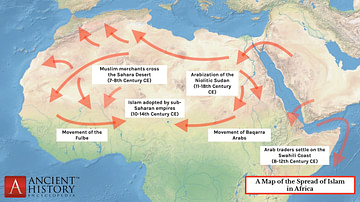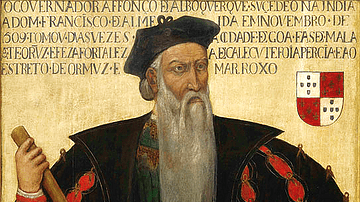Review

| Rating: | |
|---|---|
| Title: | Empires between Islam and Christianity, 1500-1800 (Suny Hindu Studies) |
| Author: | Sanjay Subrahmanyam |
| Audience: | University |
| Difficulty: | Hard |
| Publisher: | State University of New York Press |
| Published: | 2020 |
| Pages: | 472 |
In this collection of essays, Sanjay Subrahmanyam develops a macroscopic approach toward studying how empires in history shared common traits rather than focusing on one empire specifically. Building on his existing historical research, Subrahmanyam’s book is an excellent read for graduate students and professors looking for ideas for unique research directions.
'Empire' is a common concept in the field of world history. Historians often specialize in one specific empire, such as the British Empire, the Russian Empire, or the Chinese dynasties. Going beyond this unidirectional approach, Sanjay Subrahmanyam, Distinguished Professor of History & Irving and Jean Stone Endowed Chair in Social Sciences at the University of California, Los Angeles, suggests an insightful 'inter-empire' lens. In Empires Between Islam and Christianity, 1500-1800, Subrahmanyam uses the Portuguese, Ottoman, Mughal, Habsburg, and British Empires as launching points to derive a global history network that breaks intellectual borders set by stereotypes or exceptionalist thoughts.
This book is a collection of Subrahmanyam's ten previous essays opened by an original Introduction chapter. The Introduction includes a literature review of previous research on empires and a discussion of the definition of 'empire'. In addition, the Introduction lists the three questions the author identifies regarding the history of empires: that of the "synchronic," "diachronic," and the transition from empire to the nation-state (3). These questions serve as the ten body chapters' framework. Although the whole book suits graduate-level students and professionals the best, the Introduction is a great standalone reading for advanced undergraduate students.
The ten body chapters are grouped into three sections: Beginnings, Connections and Comparisons, and Representations. In each body chapter, the author tests the inter-empire lens by identifying shared historical themes. One theme that Subrahmanyam visits frequently is economic history. For instance, in Section One, he focuses on the Portuguese and other European empires' expansion into Asia during the 1500s for financial and trade benefits. Section Two does most of the comparison and contrast: the Habsburg Empire is put in conversation with the Ottoman and Mughal, and the author finds how the British Empire conceals its traces of copying the structures of the Iberian empires. Section Three looks at how empires in history portrayed themselves and their enemies to their people. Chapter Ten, in particular, is an eye-opening discussion on global intellectual history, which attempts to go beyond existing scholarship's Eurocentric tendency.
What is especially valuable about Subrahmanyam's book is how he deals with the transition from empires in the early modern to the modern period. Unlike the older research that draws a boundary between these two time periods, the author identifies the ways modern empires, such as the British, borrowed extensively from those of the early modern, like the Portuguese.
Among the essays, Subrahmanyam cites primary sources from different languages, diversifying the perspectives represented. Two maps and ten images of artifacts complement the chapters, though they do not offer too much new information. However, by using footnotes, readers can easily track citations and search for further reading materials.
Comparable books include those by Anthony Pagden, Subrahmanyam's UCLA colleague and the co-author of Chapter Seven. Specifically, Pagden's The Burdens of Empire: 1539 to the Present (2015) offers a similar thematic approach.
A highly experienced world historian, Sanjay Subrahmanyam's research often crosses geographical boundaries. He began developing “connected history” in the early 2000s, making this book the culmination of almost two decades of methodological exploration. The essays' original publication years range from 2005 to 2018. Many historians critique old stereotypes in research, such as Eurocentrism, but this is an exceptional title that helpfully contains both a discussion of methodology (the Introduction) and areas for application (the body chapters). Most suitable for history graduate students and professional scholars, Subrahmanyam's book reminds readers of the diverse yet interconnected ways empires have evolved.
About the Reviewer
Cite This Work
APA Style
Zou, Z. (2023, April 26). Empires Between Islam and Christianity, 1500-1800. World History Encyclopedia. Retrieved from https://www.worldhistory.org/review/349/empires-between-islam-and-christianity-1500-1800/
Chicago Style
Zou, Zhihui. "Empires Between Islam and Christianity, 1500-1800." World History Encyclopedia. Last modified April 26, 2023. https://www.worldhistory.org/review/349/empires-between-islam-and-christianity-1500-1800/.
MLA Style
Zou, Zhihui. "Empires Between Islam and Christianity, 1500-1800." World History Encyclopedia. World History Encyclopedia, 26 Apr 2023. Web. 24 Oct 2024.




